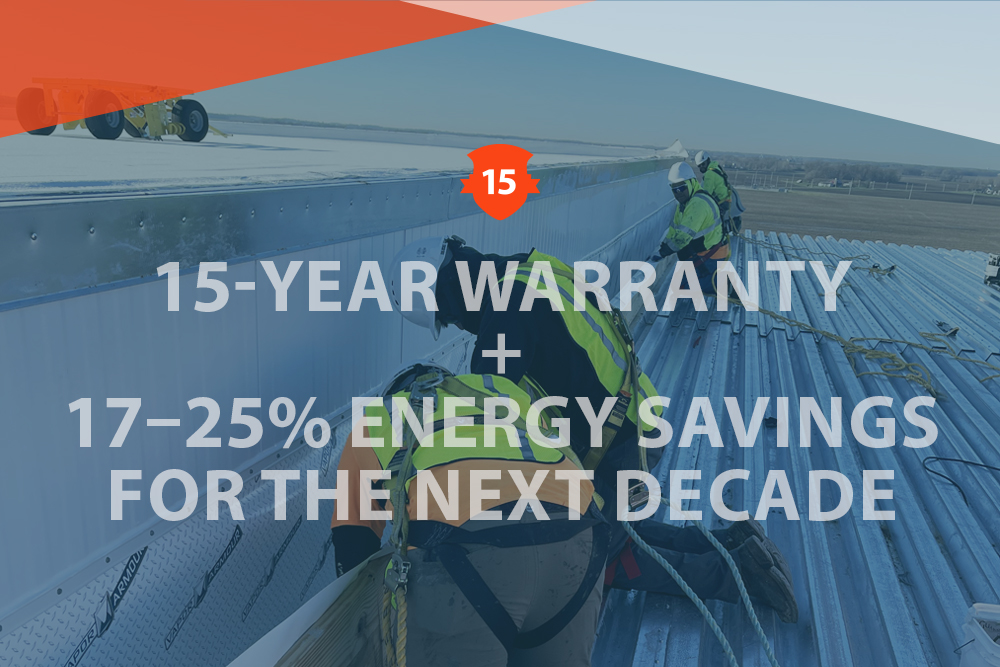By Randy Bogrand, COO
The famous investor Warren Buffett, a.k.a. the “Oracle of Omaha,” once said, “Price is what you pay. Value is what you get.” An investor does not earn the title of Oracle by making a bunch of bad predictions, so Buffett’s words should serve as a reminder for the cold storage industry: when every dollar counts, prioritize value in your spending decisions.
Of course, that is easier said than done in the face of high operating costs and tight budgets. Under these conditions, cold storage operators often focus on controlling costs and avoiding new ones like the plague. But controlling costs may seem impossible in an environment where energy usage is the second-largest expense behind labor.
An operator could claw back a percent or two on energy costs by switching to more efficient lighting, but that is only a drop in the spending bucket. Solar paneling could significantly reduce energy expenditures, but installation is costly, and it does not solve ice and condensation problems. The only other option is to turn the facility’s thermostat up a few degrees and save yourself right out of business. So how do cold storage operators bring a value-based approach to the seemingly unsolvable problem of high energy costs?
The solution to this Gordian Knot (Google it) is Vapor Armour. Our patented product seals your building’s thermal envelope, stopping vapor drive and eliminating hundreds of thousands of dollars of annual energy costs. Our product is not inexpensive, which often gives cold storage operators pause. But when we have the opportunity to share our product’s long-term value (hello, Mr. Buffett), the decision to invest in Vapor Armour becomes clear.
Calculating Vapor Armour’s Return on Investment
One common way decision-makers determine the value of a business expenditure is to calculate its return on investment (ROI). In the cold storage industry, capital expenditures are often evaluated on an ROI horizon of three to five years. If the expenditure can return its cost within that period, it is much more likely to be a worthwhile investment.
That analysis is simple enough for a piece of machinery or equipment. A forklift, for example, costs a certain amount up front and saves a certain number of labor hours per year. Even the worst math student could fumble their way through that equation. However, evaluating the cost of warm air is something else entirely. Is it possible to determine with any certainty how much warm air infiltration costs cold storage facilities? Yes, yes it is.
How Much Does Warm Air Really Cost?
Before Vapor Armour installation, the cost of warm air shows up in electric bills. One of our current clients was spending $900,000 every year on electricity before they called us. Some facilities we know of spend as much as $300,000 every month cooling their buildings. Of course, some of these costs are unavoidable because keeping a freezer at a constant negative ten degrees will never be free. But a significant portion of that electrical spending comes from fighting a never-ending flow of warm air from outside the building. Understanding how much extra vapor drive costs a facility is the key to determining the ROI and subsequent value of a Vapor Armour installation. Fortunately, we are vapor/air experts who have developed two foolproof methods operators can use to determine the actual cost of warm air infiltration in their facilities.
Post-Installation: The Historical Analysis
The most straightforward method for calculating Vapor Armour’s ROI is comparing energy usage before and after installation. We do this by analyzing our customers’ energy usage for the 13 months before installation. Once we have completed installation, we can compare new energy usage statistics with our historical analysis to find actual energy savings. Over the years, we have learned that our customers typically save 17-25% on their annual energy usage. Some facilities have seen energy savings as high as 48% after Vapor Armour was installed.
Using this framework, calculating the ROI of Vapor Armour installation is simple. If the project costs $100,000 (it could be more, but these numbers are only for demonstration) and a facility sees a $25,000 reduction in annual energy usage (it will also be more), the ROI will be four years.
While this ROI calculation method is straightforward, it has one major downside: facilities must commit to an installation before the final ROI becomes clear. In many instances, this does not matter. Our record speaks for itself, and we have hundreds of clients across North America who will vouch for the efficacy of Vapor Armour. However, some of our more analytical customers want more precise information about potential savings before they commit to installation.
We love demanding customers because they push us to improve. That is why we developed our thermal convection equation with the help of industry engineers to give these customers deeper insight into their actual costs and potential new savings.
Pre-Installation: Thermal Convection Equation
Our thermal convection equation uses several data points unique to each building and its environment to calculate the amount of energy it loses to its surroundings. A few of those data points include:
- Temperature Difference (Delta T): This measures the temperature difference between the warmest and coolest parts of a roof. A larger Delta T helps us determine where vapor drive is most likely occurring, leading to higher energy usage to maintain internal temperatures.
- Environmental Factors: A building’s location can significantly impact its energy usage. To account for this, we collect environmental readings like wind exposure, average ambient temperature, and humidity readings and average them over a year.
- ASHRAE Coefficients: We also use the American Society of Heating, Refrigerating, and Air-Conditioning Engineers (ASHRAE) Coefficients to determine how a building’s construction affects its ability to insulate against heat loss.
After inserting all these variables into the equation, we can determine the number of kilowatt hours vapor barrier discontinuity (warm air intrusion) costs a building. That figure converted to dollars, which will be eliminated by the Vapor Armour installation, is the potential energy savings a Vapor Armour installation will bring. The cost of the Vapor Armour project divided by the dollar amount saved becomes the ROI. This information takes Vapor Armour’s value out of the realm of the historical and into the present world of hard numbers and budgets.
By this point, cold storage operators have a fairly good idea of whether Vapor Armour will pay off within their ROI window. Occasionally, we will encounter buildings that are so damaged that our product just will not help. But in many instances, Vapor Armour will stop the vapor drive and save enough on energy costs to deliver an ROI within the customer’s preferred window. But, as the old saying goes, it does not stop there.
The Vapor Armour Warranty: A True Value-Add
The Vapor Armour installation will continue to stop vapor drive long after it meets the ROI threshold for installation. Our warranty guarantees that we will investigate and repair any suspected failure of our product at no charge for 15 years after installation. That means our customers will enjoy ongoing average energy savings of 17-25% or more for a decade and more after it has paid for itself! Talk about a great value.
Other Considerations Beyond ROI
While ROI is an essential method for judging the value of a business investment, Vapor Armour’s value extends well beyond cost considerations. Eliminating vapor drive not only decreases electrical expenditures but also eliminates ice and condensation. Cold storage operators will not have to worry about employees slipping on wet floors or being crushed under chunks of falling ice, which could put them in the crosshairs of the Occupational Health and Safety Administration (OSHA).
Condensation is also a risk to food safety. The Food Safety Modernization Act has given the Food and Drug Administration (FDA) more tools to compel cold storage facilities to fix their ice and condensation problems. We can all agree it is better to address these issues proactively than to react to a listeria outbreak or an FDA shutdown order.
Unchecked ice buildup brings other major challenges besides health and safety risks. Facilities must regularly run crews to manually remove ice buildup, which adds labor costs. They also have to spend money defrosting equipment, contributing to the energy expenditure black hole. Most significantly, ice buildup can also compromise a building’s structural integrity by separating the roof from the walls over time. A Vapor Armour installation will always be cheaper than the cost of an entirely new facility.
The Value is Clear
As the Oracle himself said, “Price is what you pay. Value is what you get.” When cold storage operators invest in a Vapor Armour installation, they eliminate the non-stop financial drain of vapor drive and unlock savings that will pay for the installation cost over and over again. Those savings will be protected by a 15-year no-cost warranty, and, oh, by the way, all the ice and condensation in your facility will also disappear. It should not take a visit to Omaha to see the tremendous value Vapor Armour can bring to a cold storage facility. All that is left is for us to meet up and start running the numbers.


